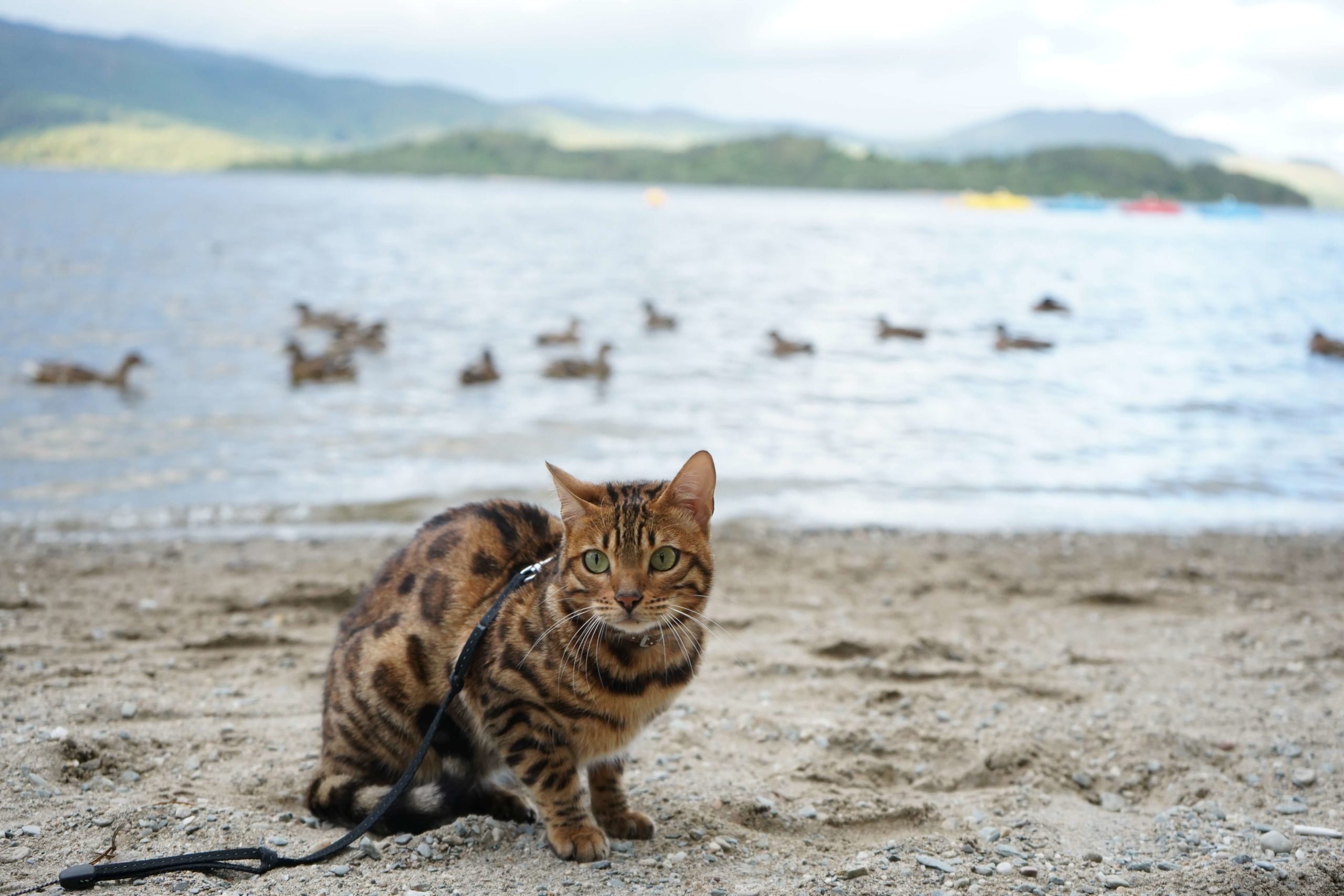If you’re learning about bengal cats, you’ve likely encountered the ranking system used to label the generation of a bengal cat by now.
Bengal cats are sorted into different categories based off how closely related they are to their wild ancestor, the Asian leopard cat.
These categories are given with an ‘F’ standing for “fili” (latin for offspring) and a number which shows how many generations that bengal is away from an Asian leopard cat.
An F1 bengal cat is a bengal that has one domestic parent and one wild parent.
F1 bengal cats are “first filial” bengals.
Once that F1 bengal cat is bred with a domestic cat, it’s offspring will be F2 bengal cats, or “second filial” bengals.
If that F2 bengal is bred with a domestic cat, the subsequent cats will be F3 bengal cats, and so on.
What Domestic Cats Are Bengal Cats Bred from?
Bengal cats are sometimes called “hybrid cats” because they are both wild and domestic.
Bengals have a wild look to them which makes them stand out from most other domestic cat breeds.
Bengal cats have spots and athletic physiques, physical attributes they share with Asian leopard cats.
To keep these attributes, Asian leopard cats are usually bred with domestic cats that are also athletic and have a more energetic temperament.
The domestic cat breeds that Asian leopards are bred with to create bengals are mainly Abyssinian cats, Bombay cats, British Shorthair cats, Egyptian mau cats, and Ocicats.

What Is an F1 Bengal Cat?
An F1 bengal cat is a bengal that has one parent that’s wild and one parent that’s domestic.
F1 bengal cats are bred from an Asian leopard cat and a domestic cat.
F1 bengals are not considered to be domestic since they are directly bred from Asian leopard cats.
F1 bengals are illegal to own in Alaska, Connecticut, Delaware, Georgia, Hawaii, Indiana, Iowa, Massachusetts, and New York.
Regardless of legality, owning an F1 bengal is not easy and F1 bengals are usually not possible to tame.
While laws regarding bengal cats are rarely enforced, F1 bengal cats are not suitable for indoor pets and can cause problems by spraying, not using a litter box, and being overly aggressive.
What Is an F2 Bengal Cat?
An F2 bengal cat is a bengal that has been bred from an F1 bengal and a domestic cat.
F2 bengals are also considered to be too wild to tame and own as domestic cats.
The same restrictions for F1 bengals also apply to F2 bengal cats in most places as well.
What Is an F3 Bengal Cat?
An F3 bengal cat is a bengal that’s been bred from an F2 bengal and a domestic cat.
F1, F2, and F3 bengals are all considered to be foundation bengal cats and can pose problems for owners who try to keep them as pets.
Most states allow the ownership of F3 bengal cats, however the states that have banned F1 and F2 bengals, also ban F3 bengal cats.
F3 bengal cats are typically the cutoff before bengals are considered to be domestic.
What Is an F4 Bengal Cat?
An F4 bengal cat is a bengal that’s been bred from an F3 bengal and a domestic cat.
F4 bengal cats are not restricted in some places but are still regulated in others.
Ownership of F4 bengal cats is standard and F4 bengal cats are seen as fully domestic cats.
F4, F5, and F6 bengal cats are called domestic generation bengal cats.
What Is an F5 Bengal Cat?
An F5 bengal cat is a bengal bred from an F4 bengal cat and a domestic cat.
F5 bengals are completely domestic and are not regulated anywhere except Hawaii and New York.
F5 bengal cats are deemed to be fully domestic and usually don’t have any behavioral problems that foundation bengals do.
Generations of bengals after F5 bengal cats are all seen to be domestic as well and aren’t restricted.
